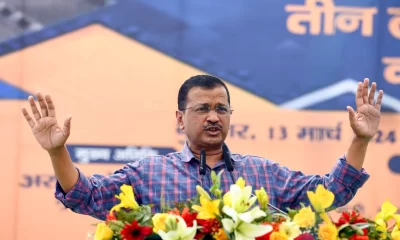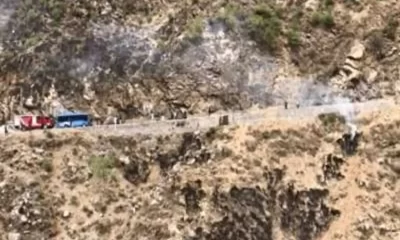Latest world news
India wins Kishangana battle against Pakistan at International Court
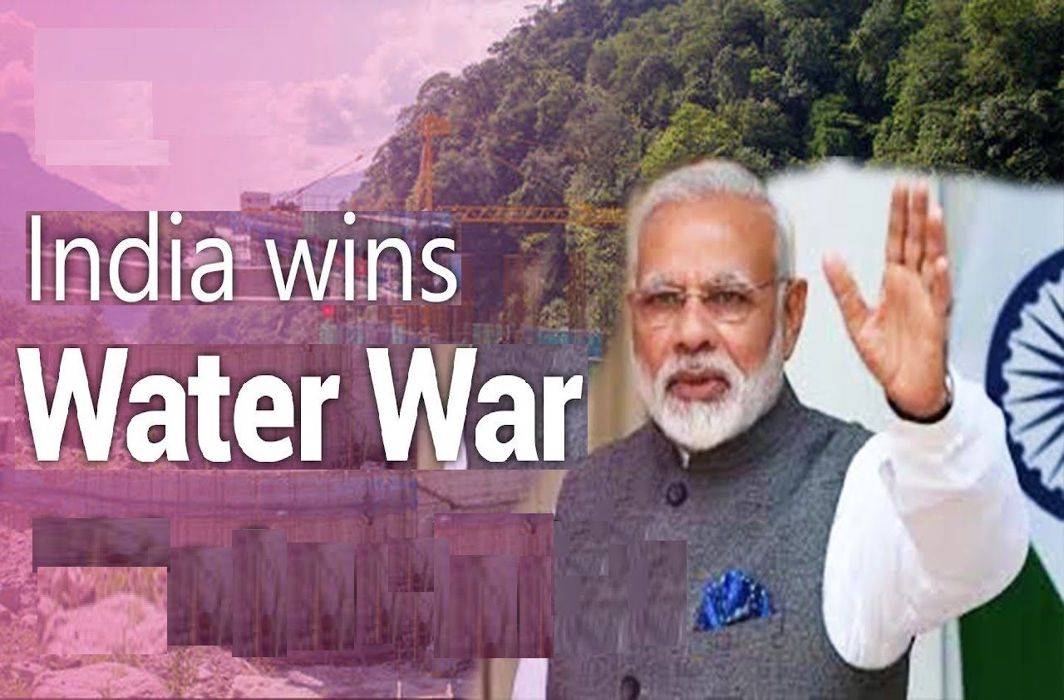
World Bank asks Pakistan to withdraw petition and accept neutral expert
India has won another diplomatic war against Pakistan on Kishanganga dam issue. The World Bank has advised Pakistan to withdraw from its stand of referring the dispute to the International Court of Arbitration (ICA) and instead accept India’s offer of appointing a “neutral expert”.
According to Pakistan’s leading daily Dawn, World Bank president Jim Yong Kim has, last week, advised Islamabad to withdraw from its stand of taking the matter to the ICA.
India describes Kishanganga dam issue as differences between two countries over the design of the dam and, therefore, it should be addressed by some neutral experts.
But Pakistan considers the construction of the dam in Jammu and Kashmir over the waters flowing into the western rivers a violation of the Indus Waters Treaty 1960. Islamabad considers that it will not only alter the course of the river but also deplete the water level of the rivers flowing into Pakistan. Hence the dispute should be referred to the international court of arbitration.
Read More: Dawn: Pakistan lost diplomatic battle on Kishanganga dam
Dawn, quoting a source privy to the development, reports that Pakistan believed that acceding to India’s proposal of referring the dispute to neutral experts or withdrawing its stand would mean closing the doors of arbitration and surrendering its right of raising disputes before international courts. The unnamed official said, “It will become a precedent and every time a dispute emerges between Pakistan and India, the latter will always opt for dispute resolution through neutral experts.”
 In November 2016, The World Bank had even picked a US chief justice, the rector of Imperial College, London, and the WB president for appointing chairman of the court to resolve the dispute over the dam.
In November 2016, The World Bank had even picked a US chief justice, the rector of Imperial College, London, and the WB president for appointing chairman of the court to resolve the dispute over the dam.
However, in December 2016, the WB president had informed Pakistan that he had decided to “pause” the process of appointing the International Court of Arbitration (ICA) chairman as well as the neutral expert.
The World Bank did not heed to Pakistan’s concern when provided with satellite images showing the ongoing construction at the dam. The bank even did not allow staying the construction of the dam.
Read More: World Bank fails to reach agreement with Pakistan on Indus Waters dispute
The 1960 treaty recognizes the WB as an arbitrator in water disputes between the two countries as played it played a key role in concluding this agreement. It allows India to have control over the water flowing into three eastern rivers- Beas, Ravi and Sutlej, also permitting India to use the water of western rivers-Chenab, Jhelum and Indus. However, it does not allow India to divert the flow of the water.
India considers this as a permission to build “run-of-the-river” hydel projects that neither change the course of the river nor deplete the water level downstream.
According to Wikipedia, the Kishanganga Hydroelectric Plant is part of a run-of- the-river hydroelectric scheme that is designed to divert water from the Kishanganga River to a power plant in the Jhelum river basin. It is located 5-km north of Bandipore in Jammu and Kashmir.
 The construction of the dam was temporarily halted by ICA in October 2011 due to Pakistan’s protest of its effect on the flow of the Kishanganga River, which is known as Neelam River in Pakistan.
The construction of the dam was temporarily halted by ICA in October 2011 due to Pakistan’s protest of its effect on the flow of the Kishanganga River, which is known as Neelam River in Pakistan.
Read More: Pakistan reaches to World Bank against India on Kishanganga dam
However, in February 2013, the ICA ruled that India could divert all the water leaving a minimum amount to the downstream of the dam for the purpose of environmental flows.
First unit of 110 MW capacity was tested in March this year, while all three units of equal capacity were commissioned and synchronized with the electricity grid by 30 March. Prime Minister Narendra Modi inaugurated the project on 19 May 2018.
Latest world news
Bigg Boss 14 contestant Rahul Vaidya struggles walking in knee deep water, compares Dubai rains with Mumbai floods
Singer and TV personality Rahul Vaidya was recently stranded in the Dubai rains.
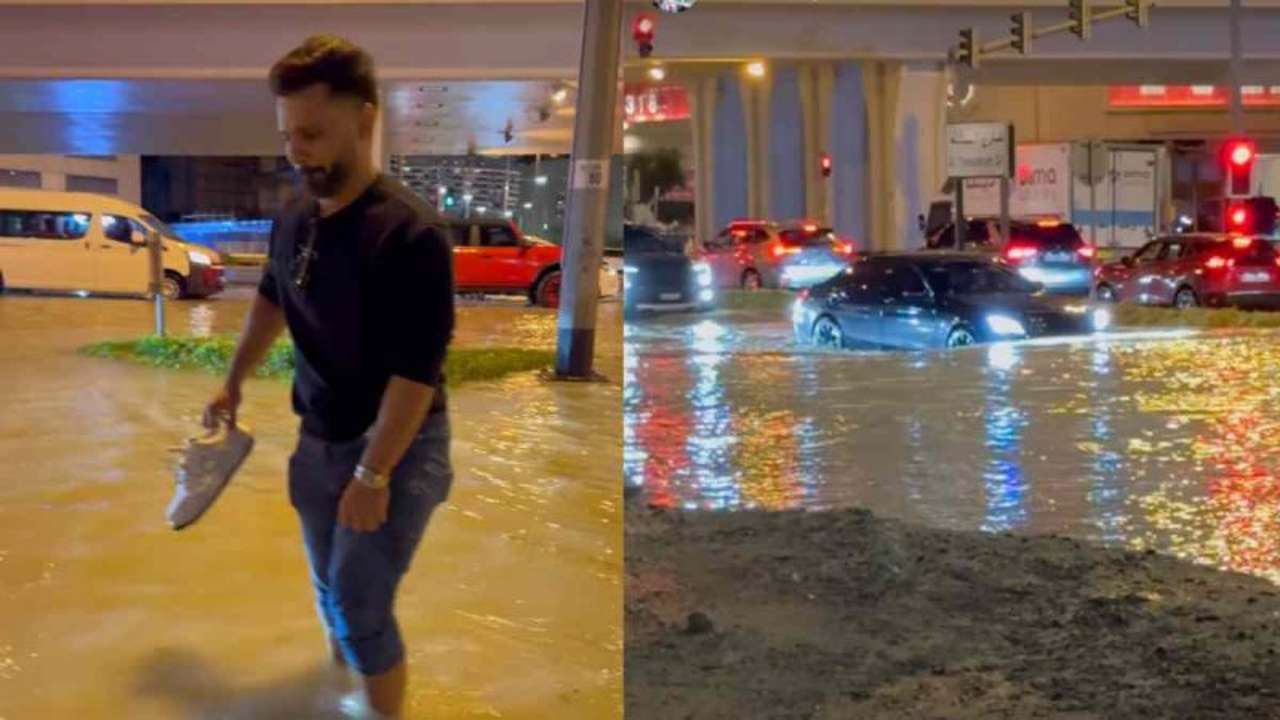
Rahul Vaidya, who was in Dubai ahead of his show which was scheduled to take place today, left the country due to heavy rains and reached Kolkata. The artist shared on social media his encounters in the UAE city, including challenges like walking through knee-deep water. Rahul provided an update regarding the heavy rainfall in Dubai on his Instagram profile.
The Bigg Boss 14 contestant revealed that he was in Kolkata and prepared to do an evening performance. Recalling the terrifying period he went through, Vaidya said there was a lot of confusion and panic in Dubai. The situation was similar to that when heavy floods hit Mumbai in 2005.
Vaiday also posted seval other images and videos of cars that were underwater and flooded roadways. The Bigg Boss 14 contestant, who shared his ordeal, claimed that even though it had just rained for two hours, the situation was dire.
In one of the video, which went viral he can be seen struggling in walking in knee-deep water. He can be also seen holding his sneakers in one hand and with other hand he was seen managing other things.
This is the result of the two hours of rain that it had, he can be heard saying in the video. Vidya also said he dosen’t believe Dubai is accustomed to a lot of rain. Everything had stopped working, he remarked.
After taking part in the first season of the singing reality show Indian Idol, Rahul Vaidya gained widespread recognition. In addition to Bigg Boss, he took part in Khatron Ke Khiladi 11.
Meanwhile, heavy rains that triggered flooding in the UAE and Bahrain, which left 18 people dead in Oman on Sunday and Monday, have paralyzed the financial hub of the Middle East, Dubai.
A lot of incoming flights were diverted from Dubai’s international airport because of the rain. At 7:26 p.m., the busiest airport in the world for foreign visitors stopped accepting new arrivals; a gradual resumption was announced for more than two hours later.
Images of planes navigating flooded tarmacs are making the rounds on social media.
According to pictures shared on social media, the flagship malls Dubai Mall and Mall of the Emirates both experienced heavy floods, while at least one Dubai Metro station had water up to the ankles.
There were several road collapses, severe flooding in residential areas, and numerous reports of leaks from windows, doors, and roofs.
Due to the unfavourable weather, schools around the United Arab Emirates were forced to close, and as more storms are predicted, the closures are anticipated to last until Wednesday. The government of Dubai allowed its staff to work remotely till this Wednesday.
Latest world news
Dubai sky turns green during storm in UAE, video goes viral
The UAE witnessed record-breaking rainfall on Tuesday and the National Centre of Meteorology recorded 254 mm of rainfall in less than 24 hrs in the Khatm Al Shakla area in Al Ain.
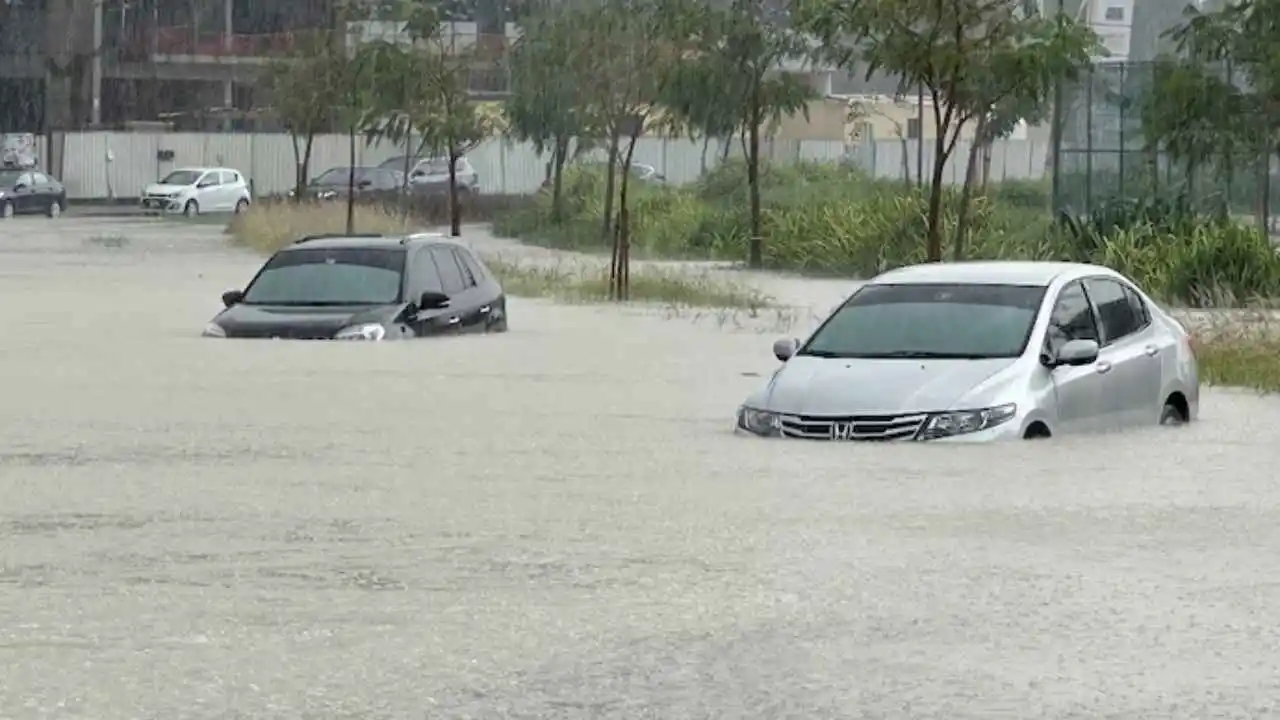
1 person was killed in UAE as it witnessed heavy rainfall on Tuesday, stranding commuters, flooding roads, disrupting trains and flights and resulting in water leakage from mall ceilings. The UAE witnessed record-breaking rainfall on Tuesday and the National Centre of Meteorology recorded 254 mm of rainfall in less than 24 hrs in the Khatm Al Shakla area in Al Ain. It is being said that the rainfall was the highest documented since the start of data collection in 1949.
The heavy rainfall in UAE came days after a similar situation in neighbouring Oman, where 13 people were killed in flash floods. Many parts of Oman saw torrential rains, which caused students to be trapped in buses and swept away motorists and trapped people in their homes.
Videos from Dubai circulating on social media showed widespread waterlogging on roads in Abu Dhabi, Dubai and other important cities. This left daily commuters in cars and other vehicles struggling to get back home. Dubai metro station too was seen flooded and closed.
One such video circulating on social media shows the aerial view of the city of Dubai from the top of a building. In the video the stormy winds are seen blowing over the city of Dubai. As the storm intensifies the Dubai sky turns green and ultimately gets covered by heavy rainfall. The video has gone viral on social media with more than 1.1 million views.
Another video showed water leakage from the ceilings of shopping malls, flooding the floors and destroying goods. A video which was shot in the famous Mall of the Emirates, showed pieces of ceiling falling as the rainwater gushed inside. Videos from many outlets of the Deira City Centre mall chain showed escalators being rendered unusable. Majid Al Futtaim, the company which owns the Mall of Emirates, said that the shopping complexes have been kept open and the customers are being sent away from the flooded areas.
India News
Sri Lankan Minister Douglas Devananda says statements on reclaiming Katchatheevu island from Sri Lanka have no ground
Devananda told the media on Thursday that it is not unusual to hear such claims and counterclaims about Katchatheevu as elections are taking place in India.

Sri Lankan Minister Douglas Devananda has said the statements from some political leaders in India on reclaiming Katchatheevu from the island nation have no ground. He told the media on Thursday that it is not unusual to hear such claims and counterclaims about the strategic island as elections are taking place in India.
The Sri Lankan Minister said he thought India is acting on its interests to secure this place to ensure Sri Lankan fishermen would not have any access to that area and that Sri Lanka should not claim any rights in that resourceful area. According to the 1974 agreement, Devananda said Indian and Sri Lankan fishermen can go fishing in the territorial waters of both countries until the pact was reviewed and amended in 1976.
The amended agreement resulted in fishermen from both countries being barred from fishing in neighboring waters. India’s ministry of External Affairs (MEA) on Thursday steered clear of the row surrounding Katchatheevu island. To a volley of questions on the Katchatheevu issue, MEA spokesperson Randhir Jaiswal reffered to External affairs Minister S Jaishankar’s recent comments on the matter.
He said he would like to talk about the issue that has been raised. He added the External Affairs minister has spoken to the press here in Delhi and also in Gujarat and has clarified all the issues. He said everyone should look into the press engagements and they would find the answers to their questions there.
The remarks from Devananda, a Sri Lankan Tamil, came days after the Narendra Modi government accused the Congress and its ally DMK in Tamil Nadu of overlooking national interests by handing over Katchatheevu island to Sri Lanka in 1974. The BJP has also been slamming the 2 parties for not ensuring the rights of the fishermen wanting to fish in waters around the island.
-
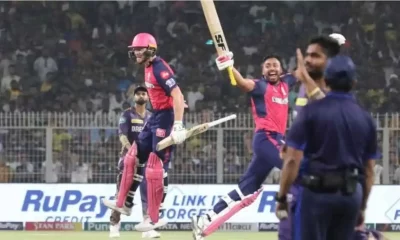
 Cricket news24 hours ago
Cricket news24 hours agoIPL 2024: Jos Buttler’s unbeaten century helps Rajasthan Royals chase down 224 against Kolkata Knight Riders
-
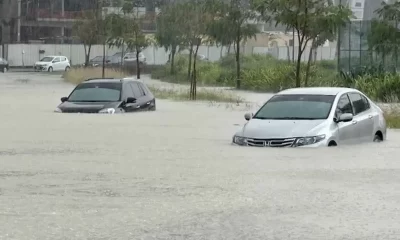
 Latest world news20 hours ago
Latest world news20 hours agoDubai sky turns green during storm in UAE, video goes viral
-

 Entertainment23 hours ago
Entertainment23 hours agoAmitabh Bachchan to receive Lata Deenanath Mangeshkar award, AR Rahman, Randeep Hooda to be honored
-

 Cricket news20 hours ago
Cricket news20 hours agoKKR captain Shreyas Iyer fined Rs 12 lakh for slow over rate in match against RR
-
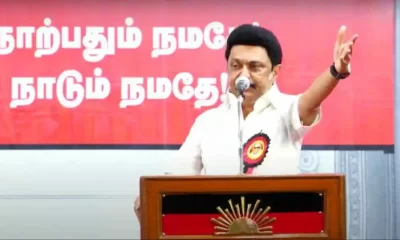
 2024 Lok Sabha Elections22 hours ago
2024 Lok Sabha Elections22 hours agoMK Stalin says if Prime Minister Narendra Modi comes to power again, the country would go back by 200 years
-

 2024 Lok Sabha Elections19 hours ago
2024 Lok Sabha Elections19 hours agoMamata Banerjee accuses BJP of plotting riots on Ram Navami
-
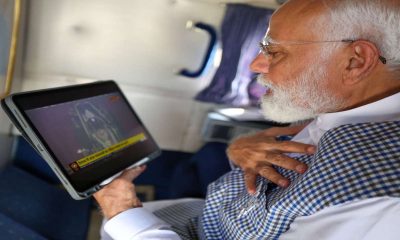
 India News22 hours ago
India News22 hours agoPM Modi chants Jai Shri Ram in Assam rally, shares visuals of Ram Lalla’s Surya Tilak, says emotional moment for him
-

 India News17 hours ago
India News17 hours agoLamborghini Gallardo worth nearly Rs 1 crore set on fire over business dispute



